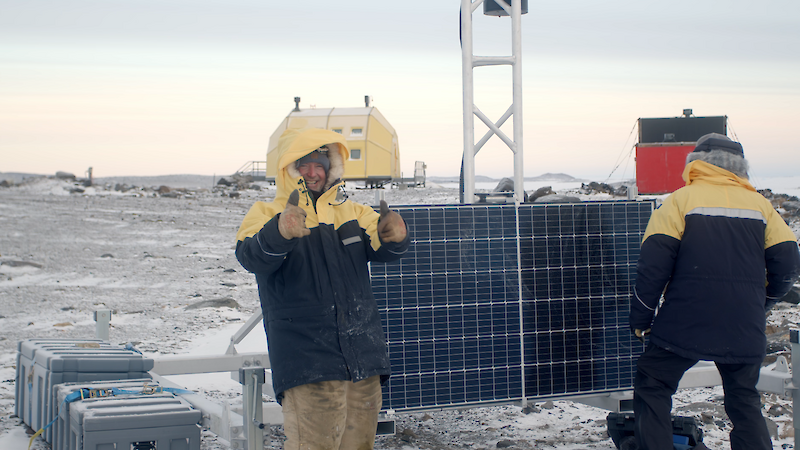Eyes in Antarctica
Just below the weather sensor is a 25X zoom camera with a 360 degree-view and a second, smaller camera that will move in and out of a protective housing.
“We have two cameras for redundancy, and we’ll likely run them at different times for a few minutes every hour,” Mr Milnes said.
“They will run on a pre-programmed schedule but we’ll be able to adjust their timing and field-of-view from Tasmania, in real time.”
Power is provided by the solar panel in summer, and batteries – similar to car batteries – in winter periods of darkness.
While the collected data and images can be securely stored within the instrument, the aim is to provide almost real-time transfer via satellite to where it’s needed, through the Australian Antarctic Data Center.
The first ARTEMIS was delivered to Davis station for testing in early 2022, before deployment to the Larsemann Hills later this year. Other units will be deployed in the following years.
All installations will be subject to environmental impact assessments, and will be informed by the scientific experts and managers who work together to understand and protect the unique Antarctic and sub-Antarctic environments.
